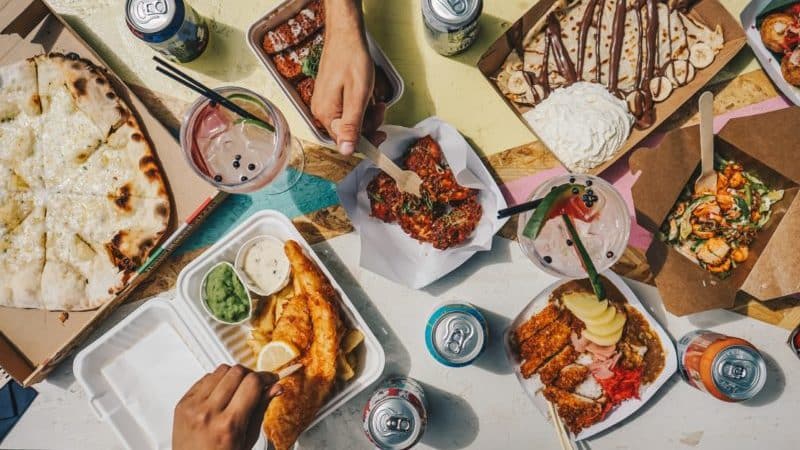In an era of escalating living costs and fluctuating economic stability, the prospect of acquiring free meals can seem like an almost quixotic pursuit for many. Yet, a vast and often intricate ecosystem of resources exists, offering succor to individuals grappling with food insecurity or simply seeking to mitigate their daily expenditures. Understanding this multifaceted landscape requires a judicious discernment of available avenues, ranging from community-driven initiatives to less conventional, yet equally valid, methods of culinary procurement. This exploration aims to illuminate the diverse pathways through which one might acquire free sustenance, emphasizing both the established philanthropic channels and the more resourceful, albeit sometimes overlooked, opportunities.

Established Avenues: Food Banks, Soup Kitchens, and Community Support
The most overt and widely recognized conduits for free meals are the formalized charitable organizations dedicated to alleviating food poverty. These institutions form the bedrock of food assistance, providing essential sustenance to millions globally. Their operations are typically underpinned by volunteerism, donations, and often, government subsidies, forming a critical safety net for vulnerable populations.
Food Banks: A Larder of Provisions
Food banks function as clearinghouses for donated food, which they then distribute to a network of smaller agencies, such as pantries, soup kitchens, and shelters. These organizations do not typically dispense food directly to individuals but rather serve as a logistical hub. To access their provisions, individuals usually need to locate a food pantry or a distribution center affiliated with a food bank in their locality. Eligibility criteria often apply, typically based on income thresholds or demonstrated need, though some operate on a more open-access model. The fare provided is often shelf-stable groceries, fresh produce, and sometimes, even perishable items, enabling recipients to prepare their own meals at home. This approach empowers individuals with agency over their dietary choices while alleviating financial strain.
Soup Kitchens and Community Meals: Immediate Sustenance
Soup kitchens and community meal programs offer immediate, prepared meals in a communal setting. These establishments are particularly vital for individuals experiencing homelessness, those without cooking facilities, or anyone in urgent need of a hot meal. They often operate on a drop-in basis, without extensive eligibility requirements, prioritizing accessibility. Beyond the caloric intake, these venues frequently provide a sense of community, warmth, and a temporary reprieve from hardship. The menus, while varying by organization and availability of ingredients, typically feature hearty, balanced fare designed to be nourishing and comforting. Many faith-based organizations and local charities run such programs, frequently publishing their operating hours and locations on community boards or online directories.
Less Conventional Routes: Resourcefulness and Reciprocity
Beyond the formalized structures of food aid, myriad less conventional pathways exist for obtaining free meals, often predicated on principles of resourcefulness, community engagement, and the burgeoning circular economy of food. These avenues may require a more proactive approach but can yield surprisingly abundant results for the perspicacious individual.
Gleaning and Foraging: Tapping into Nature’s Bounty
For those with an inclination towards ecological awareness and a modicum of botanical acumen, gleaning and urban foraging present viable, albeit specialized, opportunities. Gleaning involves collecting leftover crops from farmers’ fields after the commercial harvest, which would otherwise go to waste. Numerous non-profit organizations facilitate gleaning operations, distributing the collected produce to those in need. Urban foraging, on the other hand, entails identifying and harvesting edible wild plants, fruits, and nuts in urban or peri-urban environments. This requires careful identification skills to avoid toxic imposters and a respectful understanding of property rights. While not a primary source of sustenance for most, it can supplement a diet with nutrient-dense, hyper-local fare.
Food Sharing Apps and Networks: Digital Philanthropy
The digital age has spawned innovative platforms that facilitate the redistribution of surplus food, effectively creating a peer-to-peer system of culinary generosity. Food sharing apps connect individuals or businesses with excess edible food to those who can utilize it, preventing wastage and providing free meals. Restaurants, bakeries, and even individuals might offer perfectly good, albeit surplus, items that would otherwise be discarded. Similarly, online community groups and social media platforms often serve as informal networks for sharing food, whether it’s excess garden produce, a bulk-cooked meal, or items from a pantry clear-out. These platforms epitomize a burgeoning anti-waste ethos, transforming potential refuse into valuable sustenance.
Cultivating Opportunities: Engaging with the Broader Community
Beyond direct acquisition, strategic engagement with community initiatives and leveraging specific circumstances can open doors to free meals or significantly reduced-cost food. This involves being attuned to local events and embracing a spirit of proactive participation.
Volunteerism and Community Events: Reciprocity in Action
Many organizations that provide free meals, such as soup kitchens or community centers, are perpetually in need of volunteers. Offering your time and effort can often lead to a reciprocal benefit, with volunteers frequently being offered a meal as a gesture of appreciation. Furthermore, various community events, festivals, and public gatherings occasionally feature complimentary food samples, free barbecues, or sponsored meal services, particularly during holiday periods or local celebrations. Staying abreast of local community calendars and municipal announcements can unveil these sporadic but welcome opportunities for free victuals.
The pursuit of free meals, whether necessitated by circumstance or driven by a desire for frugality, is a journey through a landscape rich with resources and human compassion. By understanding the established networks, embracing resourceful methodologies, and engaging with the broader community, individuals can effectively navigate this terrain, ensuring access to essential sustenance and mitigating the pervasive challenge of food insecurity.